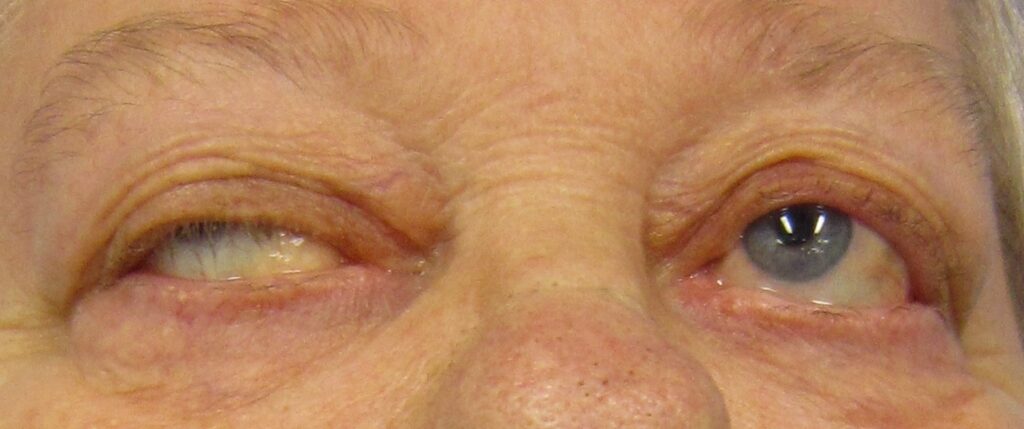Table of Contents
Understanding Myasthenia Gravis
Myasthenia gravis (MG) is a chronic autoimmune neuromuscular disorder characterized by weakness and rapid fatigue of any of the muscles under voluntary control. This condition occurs when communication between nerve cells and muscles is impaired at the neuromuscular junction, where nerve cells connect with the muscles they control. The impairment is typically due to the body’s immune system producing antibodies that block or destroy muscle receptor sites for the neurotransmitter acetylcholine.

Symptoms
The symptoms of myasthenia gravis can vary widely among individuals and can affect different muscle groups. Common symptoms include:
- Muscle Weakness: Fluctuating weakness and fatigue of voluntary muscles, particularly after exertion and improving with rest.
- Ptosis: Drooping of one or both eyelids.
- Diplopia: Double vision due to weakness of the muscles that control eye movements.
- Facial Weakness: Difficulty in making facial expressions, chewing, swallowing, and speaking.
- Breathing Difficulties: Weakness in respiratory muscles, which can lead to shortness of breath.
- Generalized Fatigue: Overall sense of tiredness and lack of energy.
When to See a Doctor
Early diagnosis and treatment of myasthenia gravis are crucial for managing the condition effectively and preventing complications. You should see a doctor if you experience:
- Persistent muscle weakness that improves with rest.
- Drooping eyelids or double vision.
- Difficulty swallowing, chewing, or speaking.
- Shortness of breath or difficulty breathing.
- Muscle weakness that progressively worsens.
Causes
The primary cause of myasthenia gravis is an autoimmune response where the body’s immune system produces antibodies that block or destroy acetylcholine receptors at the neuromuscular junction. This prevents muscle contraction and leads to weakness. The exact trigger for this autoimmune response is unknown, but potential contributing factors include:
- Genetics: Family history of autoimmune disorders may increase susceptibility.
- Thymus Gland Abnormalities: The thymus gland, which is part of the immune system, may be involved in triggering or maintaining the production of these antibodies. Thymomas, or tumors of the thymus gland, are found in some patients with MG.
- Infections and Stress: These factors may exacerbate or trigger symptoms.
Risk Factors
Several factors may increase the risk of developing myasthenia gravis, including:
- Age: Most commonly affects women under 40 and men over 60, but it can occur at any age.
- Sex: Women are more likely to develop MG than men.
- Autoimmune Disorders: Having another autoimmune disease increases the risk.
- Family History: Higher risk if a close relative has myasthenia gravis or another autoimmune condition.
Diagnostics
Diagnosing myasthenia gravis involves several steps:
- Medical History and Physical Exam: The doctor will review symptoms and perform a thorough physical examination.
- Blood Tests: To detect the presence of acetylcholine receptor antibodies or anti-MuSK antibodies.
- Electromyography (EMG): A test that measures the electrical activity of muscles and nerve cells.
- Nerve Conduction Studies: To assess how well and how fast the nerves can send electrical signals.
- Edrophonium Test: An injection that briefly relieves weakness in people with MG.
- Imaging Tests: CT or MRI scans to check for thymus gland abnormalities.
Treatment Approaches
While there is no cure for myasthenia gravis, various treatment options can help manage symptoms and improve muscle function. Treatment approaches include:
- Medications:
- Cholinesterase Inhibitors: Such as pyridostigmine (Mestinon) to improve communication between nerves and muscles.
- Immunosuppressants: Such as prednisone, azathioprine, and mycophenolate mofetil to suppress the immune response.
- Monoclonal Antibodies: Such as rituximab and eculizumab for severe cases.
- Therapies:
- Plasmapheresis: A procedure that removes antibodies from the blood.
- Intravenous Immunoglobulin (IVIG): Provides normal antibodies to alter the immune response.
- Surgery:
- Thymectomy: Removal of the thymus gland, which can reduce symptoms in some patients.
- Lifestyle and Home Remedies:
- Regular Monitoring: Regular follow-ups with a healthcare provider to monitor symptoms and adjust treatments as needed.
- Balanced Diet: Eating a healthy diet to support overall health.
- Exercise: Gentle exercise to maintain muscle strength and flexibility, avoiding overexertion.
- Stress Management: Techniques such as yoga, meditation, and deep breathing to manage stress, which can exacerbate symptoms.
- Assistive Devices: Using tools to help with daily activities, such as eye patches for double vision or mobility aids for muscle weakness.
Complications
Myasthenia gravis can lead to several complications if not properly managed, including:
- Myasthenic Crisis: A severe exacerbation of symptoms that can cause respiratory failure, requiring immediate medical attention.
- Thymoma: Tumors of the thymus gland, which can sometimes be malignant.
- Severe Muscle Weakness: Can lead to difficulty with essential functions like swallowing and breathing.
- Emotional Impact: Depression and anxiety due to chronic illness and fluctuating symptoms.
Recent Updates
Recent advancements in myasthenia gravis research include:
- New Medications: Development of new drugs targeting specific immune pathways involved in MG.
- Biologic Therapies: Research into biologic treatments that offer more targeted immune modulation.
- Genetic Research: Identifying genetic markers to better understand the genetic basis of MG and develop personalized treatments.
- Improved Diagnostic Techniques: Enhanced methods for detecting antibodies and diagnosing MG earlier and more accurately.
Conclusion
Managing myasthenia gravis effectively requires a comprehensive approach that includes medication, lifestyle changes, and regular consultations with healthcare providers. Early diagnosis and intervention are crucial in preventing complications and improving quality of life. Staying informed about the latest research and treatment options can empower individuals to better manage their condition and maintain a good quality of life. If you experience persistent symptoms of myasthenia gravis, consult your doctor promptly for a thorough evaluation and appropriate management.
Additional Content
For comprehensive information on the various treatments you can explore our Autoimmune Disease Treatment page. If you are seeking expert medical advice, our Top Autoimmune Doctors section provides a list of highly recommended specialists. Additionally, for an overview of other autoimmune conditions, visit our Autoimmune Diseases page.